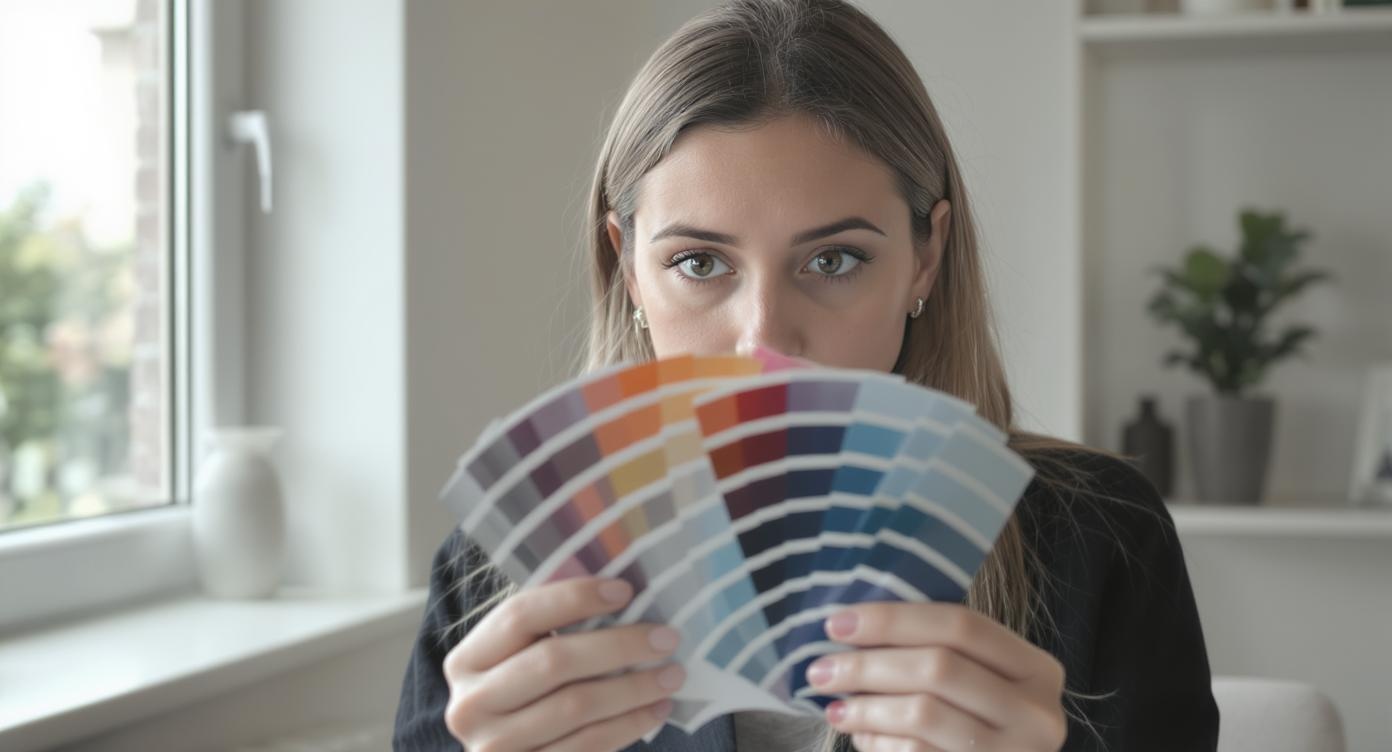
Table of contents
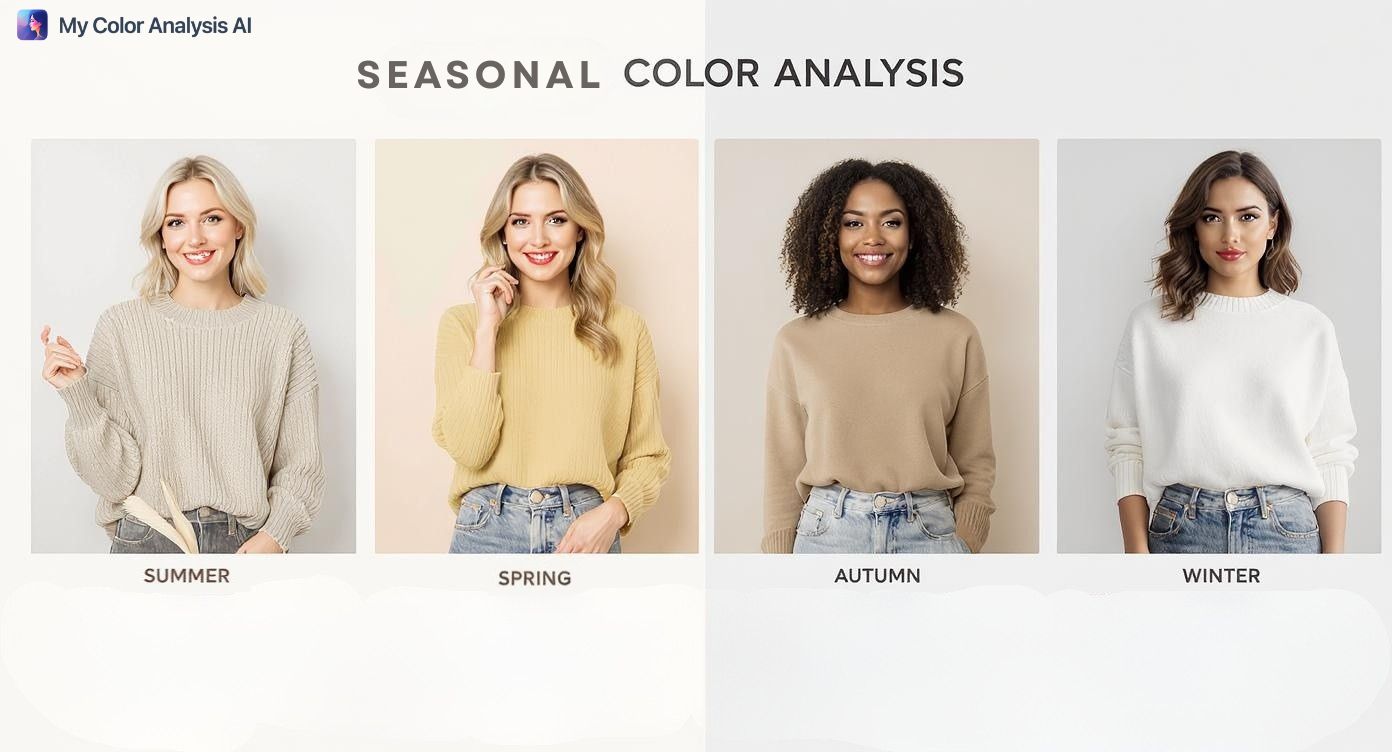
Ever wondered why certain colors make you look radiant while others leave you looking washed out? The answer lies in seasonal color analysis—a proven method to identify the colors that naturally complement your unique features.
Seasonal color analysis matches your natural coloring (skin, hair, and eyes) to one of four seasonal palettes. Each season represents a specific combination of undertones, contrast levels, and color intensities that harmonize with your natural beauty.
The Quick Foundation: Determining Your Undertone
Before diving into seasons, you need to identify your skin's undertone—the subtle color beneath your skin's surface.
The Vein Test (Most Reliable)
Look at the veins on your wrist in natural light:
- Green veins = Warm undertones
- Blue/purple veins = Cool undertones
- Mix of both = Neutral undertones
The Jewelry Test
- Gold looks better = Warm undertones
- Silver looks better = Cool undertones
- Both look good = Neutral undertones
The White Paper Test
Hold a white sheet of paper next to your face in natural light:
- Skin appears yellow/golden = Warm
- Skin appears pink/rosy = Cool
- No obvious cast = Neutral
The Four Seasons Explained
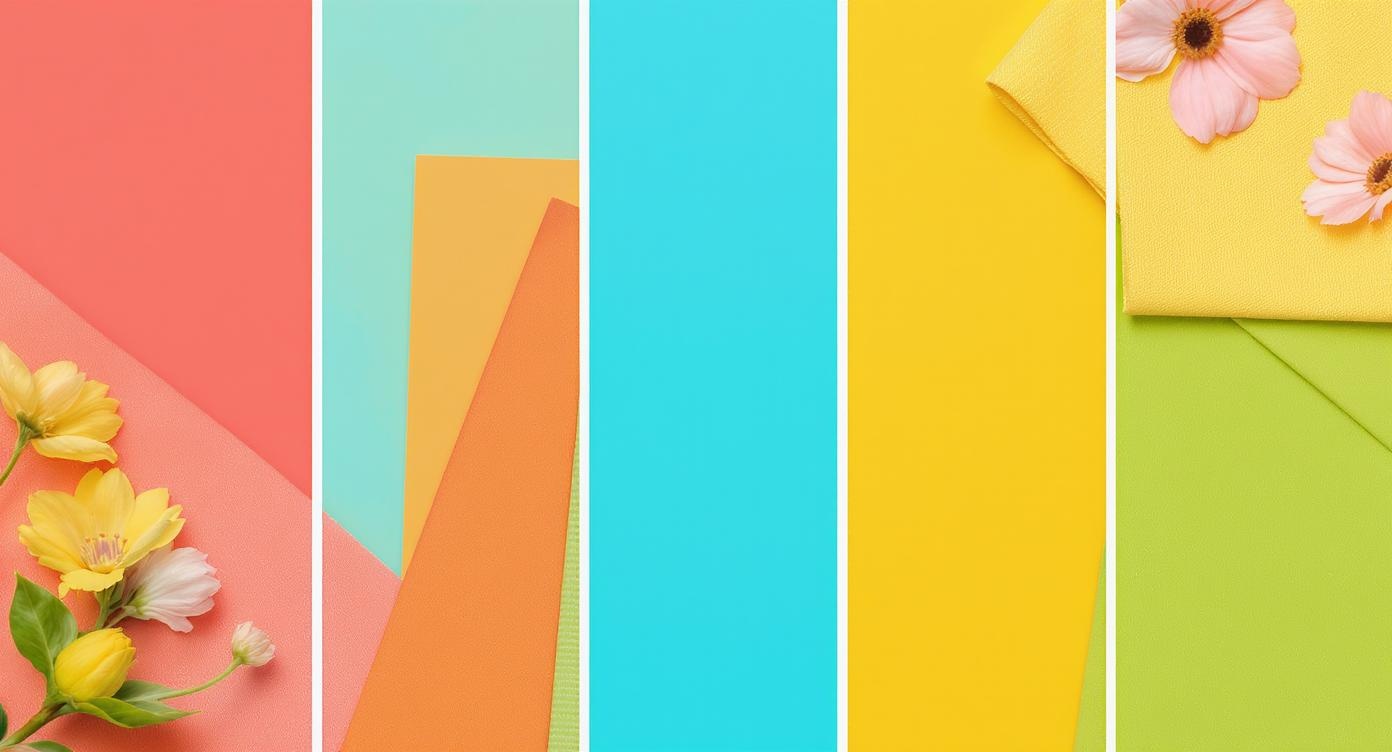
SPRING: Warm & Bright
You might be a Spring if you have:
- Light to medium warm skin with golden or peachy undertones
- Hair: Golden blonde, strawberry blonde, auburn, or warm brown
- Eyes: Blue, green, hazel, or light brown with golden flecks
- You tan easily rather than burn
Spring colors: Bright, clear, warm tones like coral, turquoise, golden yellow, warm red, and fresh greens. Think vibrant and energetic.
Celebrity examples: Taylor Swift, Blake Lively, Emma Stone
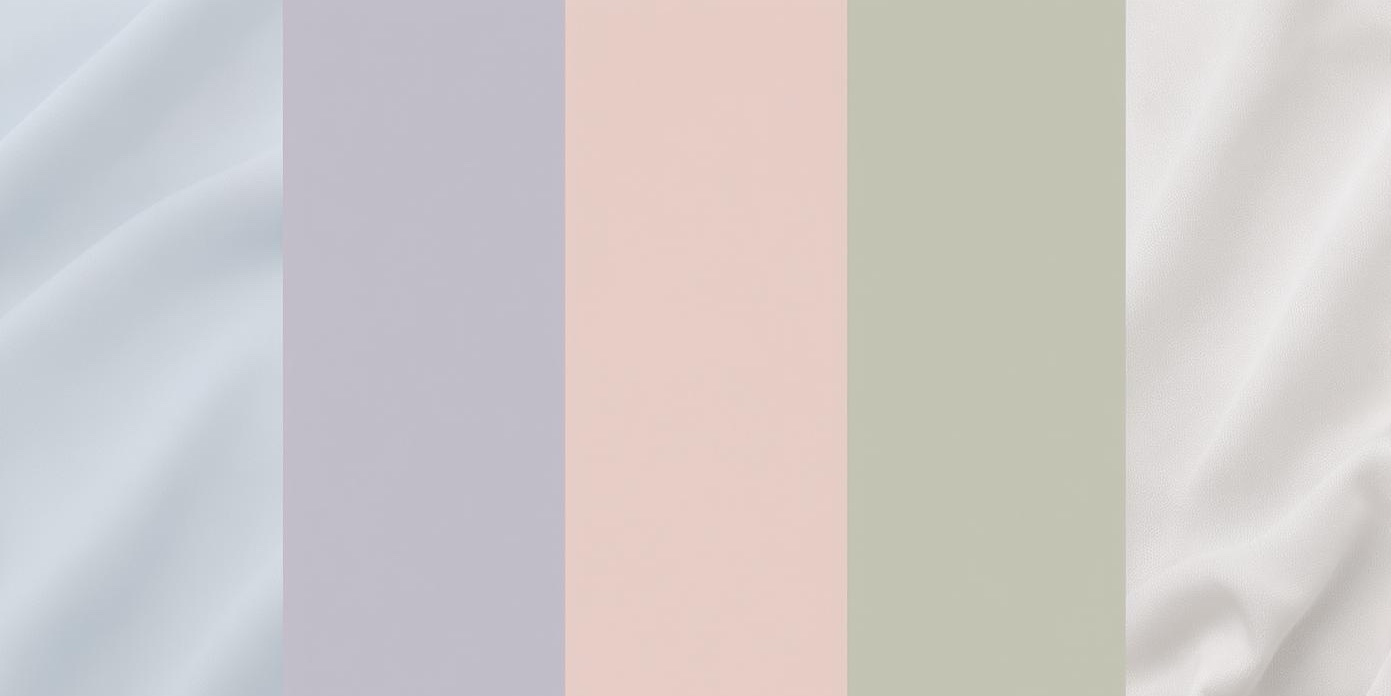
SUMMER: Cool & Soft
You might be a Summer if you have:
- Light to medium cool skin with pink or blue undertones
- Hair: Ash blonde, light to medium ash brown
- Eyes: Blue, green, gray, or soft brown
- You burn easily in the sun
Summer colors: Soft, muted, cool tones like powder blue, lavender, rose pink, and sage green. Think gentle and ethereal.
Celebrity examples: Reese Witherspoon, Amy Adams, Scarlett Johansson
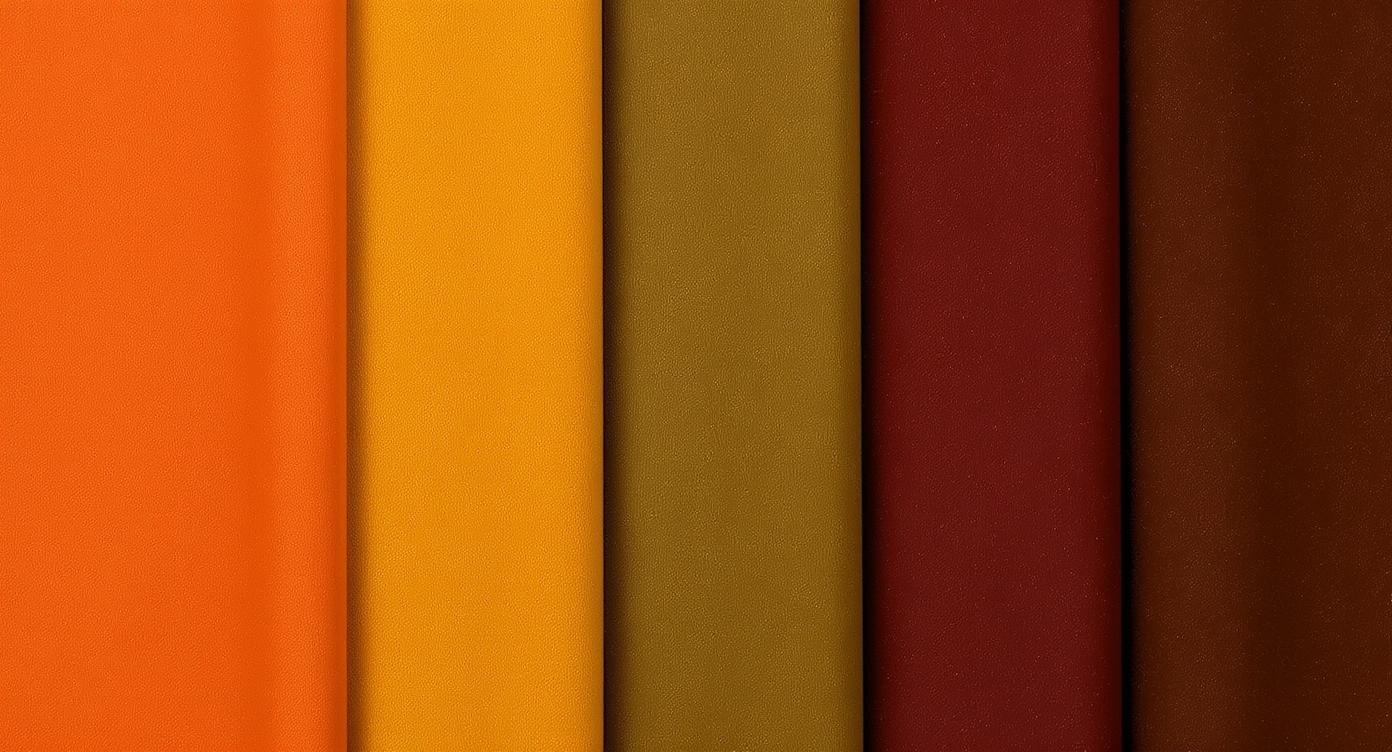
AUTUMN: Warm & Rich
You might be an Autumn if you have:
- Medium to deep warm skin with golden or peachy undertones
- Hair: Medium to dark brown, auburn, or dark golden blonde
- Eyes: Brown, hazel, green, or warm blue
- You tan well and rarely burn
Autumn colors: Rich, warm, earthy tones like rust, mustard, olive green, deep orange, and warm browns. Think cozy and sophisticated.
Celebrity examples: Julia Roberts, Jennifer Lopez, Julianne Moore
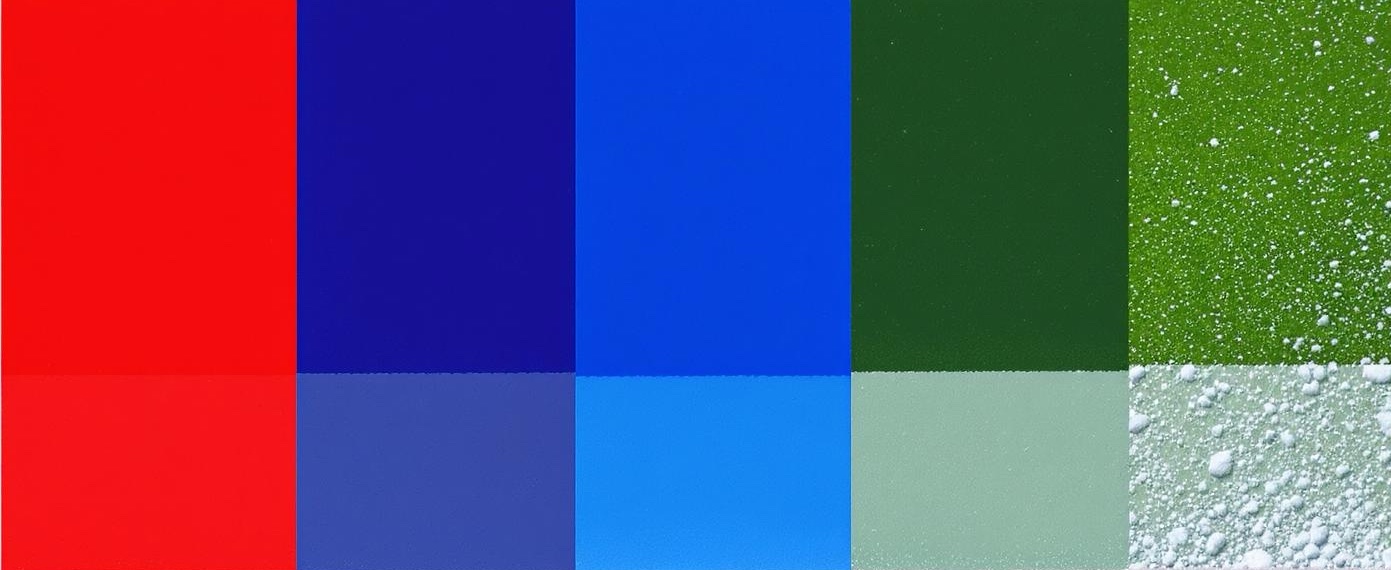
WINTER: Cool & Bold
You might be a Winter if you have:
- Light to deep cool skin with pink or blue undertones
- Hair: Dark brown, black, or platinum blonde
- Eyes: Dark brown, black, icy blue, or green
- High contrast between features (light skin with dark hair, or very pale with very dark eyes)
Winter colors: Bold, cool, clear tones like true red, royal blue, emerald green, black, and bright white. Think dramatic and sophisticated.
Celebrity examples: Anne Hathaway, Megan Fox, Lupita Nyong'o
The 12-Season System: Getting More Specific
The four main seasons each have three subtypes, creating 12 total possibilities:
Spring Subtypes:
- Light Spring (softest)
- Warm Spring (most golden)
- Clear Spring (brightest)
Summer Subtypes:
- Light Summer (brightest summer)
- Cool Summer (most muted)
- Soft Summer (most neutral)
Autumn Subtypes:
- Warm Autumn (most golden)
- Soft Autumn (most muted)
- Deep Autumn (darkest)
Winter Subtypes:
- Cool Winter (most icy)
- Deep Winter (darkest)
- Clear Winter (highest contrast)
Quick Self-Assessment Quiz

1. Your natural hair color is:
- Light blonde/golden = Spring or Light Summer
- Medium brown/ash = Summer or Soft Autumn
- Dark brown/black = Autumn or Winter
- Very light/platinum = Light Summer or Clear Winter
2. Your eyes are:
- Bright and clear = Spring or Winter
- Soft and muted = Summer or Autumn
- High contrast to skin = Winter
- Low contrast to skin = Summer
3. You look best in:
- Bright, warm colors = Spring
- Soft, cool colors = Summer
- Rich, warm colors = Autumn
- Bold, cool colors = Winter
Practical Tips for Your Season
For Springs:
- Embrace bright, warm colors
- Avoid muddy or overly dark shades
- Gold jewelry works best
- Try coral or peach lipstick
For Summers:
- Choose soft, muted tones
- Avoid harsh or overly bright colors
- Silver jewelry is most flattering
- Pink or rose lipsticks are ideal
For Autumns:
- Wear rich, earthy tones
- Avoid icy or very bright colors
- Gold and brass jewelry complement you
- Warm reds and oranges work well
For Winters:
- Go for bold, clear colors
- Avoid muted or muddy tones
- Both silver and white gold work
- True reds and berries are stunning
Common Mistakes to Avoid
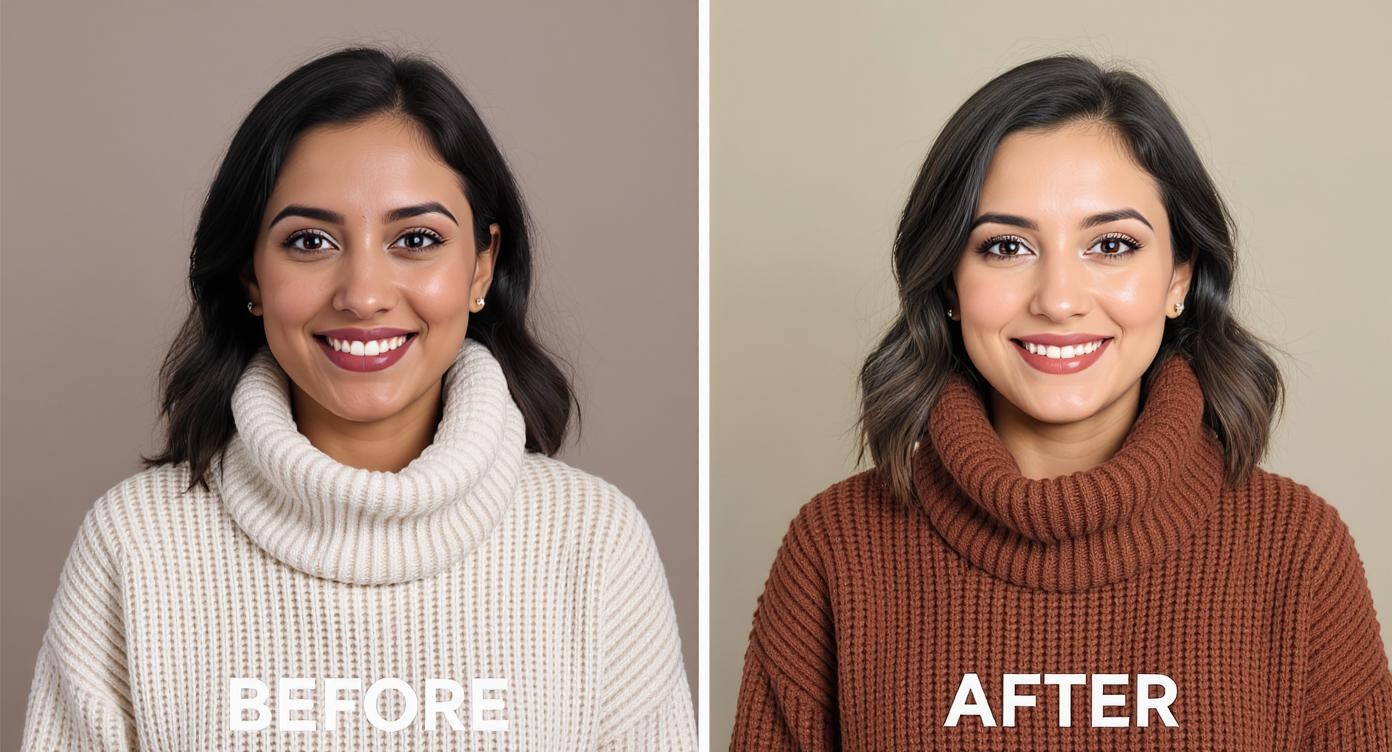
- Relying only on hair color - It can be dyed or change over time
- Ignoring undertones - Surface color isn't everything
- Following trends blindly - Wear what flatters you, not what's popular
- Being too rigid - These are guidelines, not absolute rules
How to Test Your Season
The most accurate way to determine your season is through professional color draping, but you can do a simplified version at home:
- Gather fabric swatches or clothing in different seasonal colors
- Stand in natural light with a clean face (no makeup)
- Hold each color near your face
- Notice which colors make you look:
- More awake and vibrant
- Have clearer skin
- Brighter eyes
- More balanced overall
Building Your Seasonal Wardrobe
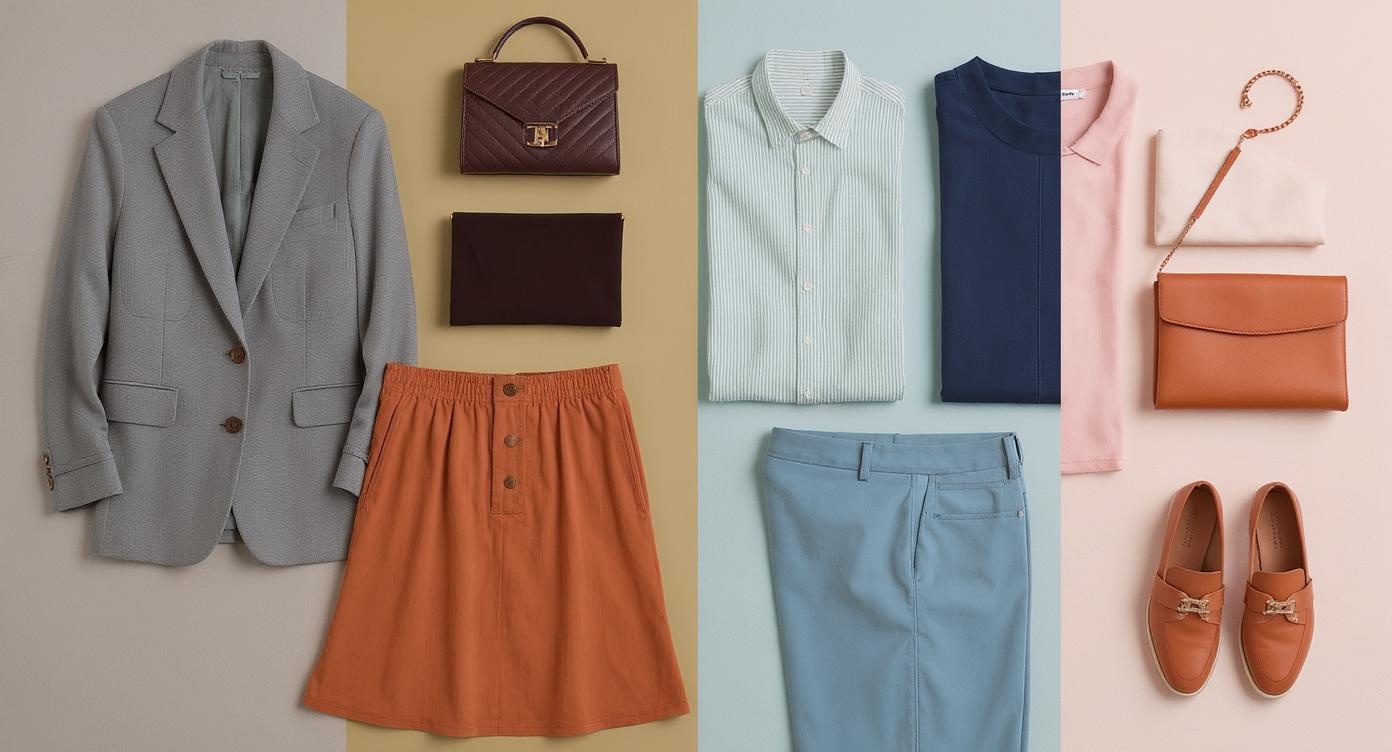
Once you know your season:
Start with neutrals from your palette for versatile basics
Add accent colors gradually to test how they work for you
Consider the 80/20 rule: 80% colors from your season, 20% experimenting
Focus on colors near your face first—tops, scarves, jewelry
Beyond Clothing: Your Complete Color Strategy
Makeup
- Foundation: Match your undertone
- Lipstick: Choose from your seasonal palette
- Eyeshadow: Complement your eye color within your season
Hair Color
- Stay within your warm/cool undertone family
- Consider your season's intensity level
- Consult a colorist familiar with seasonal analysis
Home Decor
Many people naturally gravitate toward their seasonal colors in home decor too!
Resources
For more information about your personal seasonal color analysis, visit:
Related seasonal color guides
- Spring Family:
- Summer Family:
- Autumn Family:
- Winter Family:
Remember: You're Not Limited
Seasonal color analysis is a tool, not a rulebook. While it provides an excellent starting point for understanding which colors naturally flatter you, personal preference and confidence matter most. Use your seasonal palette as a guide, but don't be afraid to experiment and find what makes you feel your best.
The goal isn't to restrict your choices but to give you confidence in making color decisions that enhance your natural beauty. Whether you're a vibrant Spring or a sophisticated Winter, embrace the colors that make you shine.
Want to learn more about your specific season? Consider booking a professional color analysis or exploring the detailed color palettes available from certified color analysts. The investment in understanding your colors can transform how you shop, dress, and feel about your appearance.

Article by
Natalie Bolonina
Graduated from the ESSEC Business School, Natalie is a marketing expert specializing in beauty tech.
Related Articles

Navy Blue Color: The Complete Guide to History, Psychology & Design Applications (2025)
Discover everything about navy blue color - from its rich maritime history to trending color combinations. Get hex codes, design tips, and see why navy blue is the sophisticated alternative to black in 2025.
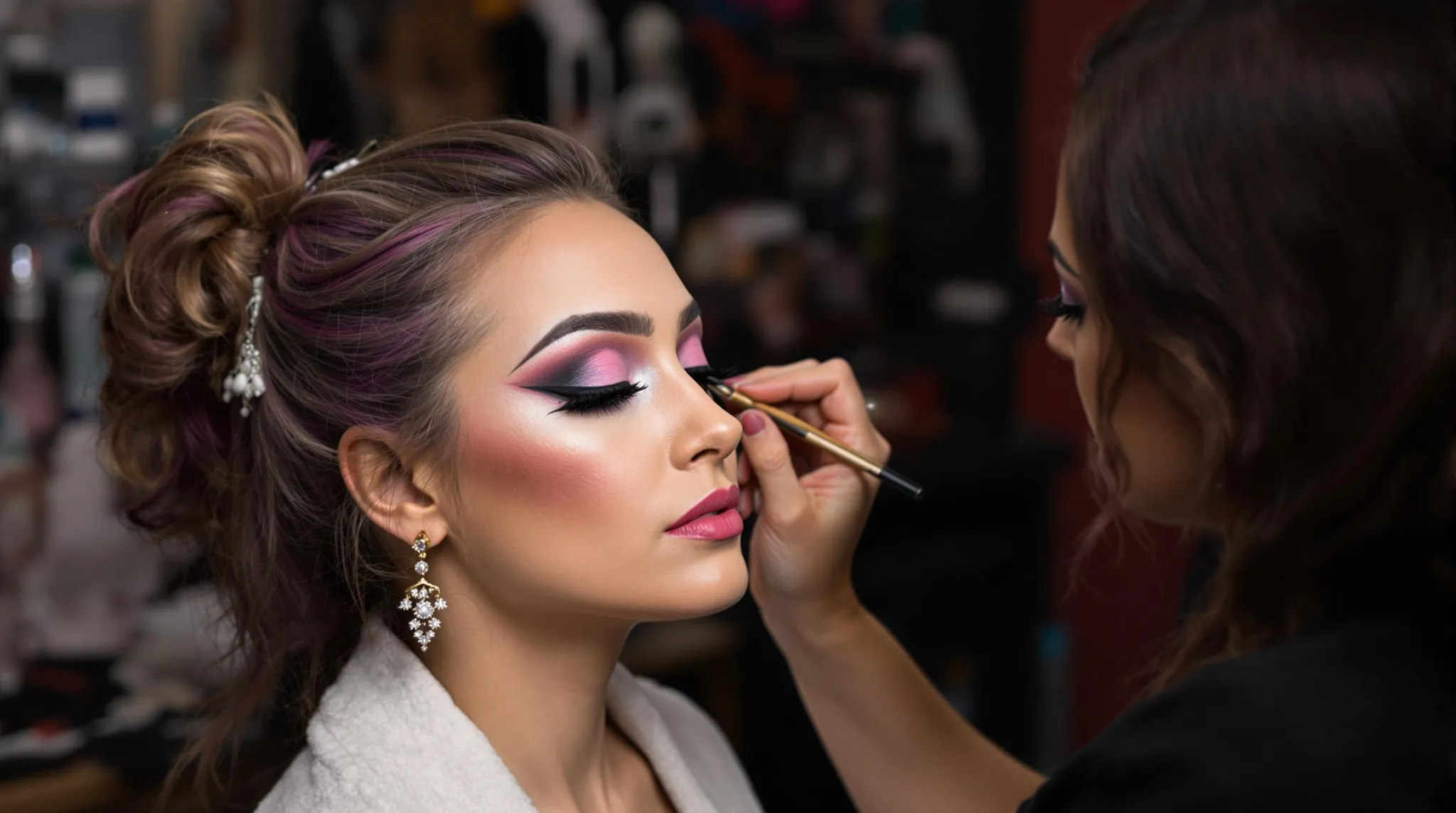
Types of Makeup: A Comprehensive Guide to Cosmetic Products and Styles
Dive into the diverse world of makeup, where products and styles merge to create endless possibilities for self-expression. Whether you're drawn to the subtle elegance of nude makeup, the dramatic allure of vintage glamour, or the dewy freshness of Korean beauty trends, this comprehensive guide will walk you through both essential cosmetic products and popular makeup styles.
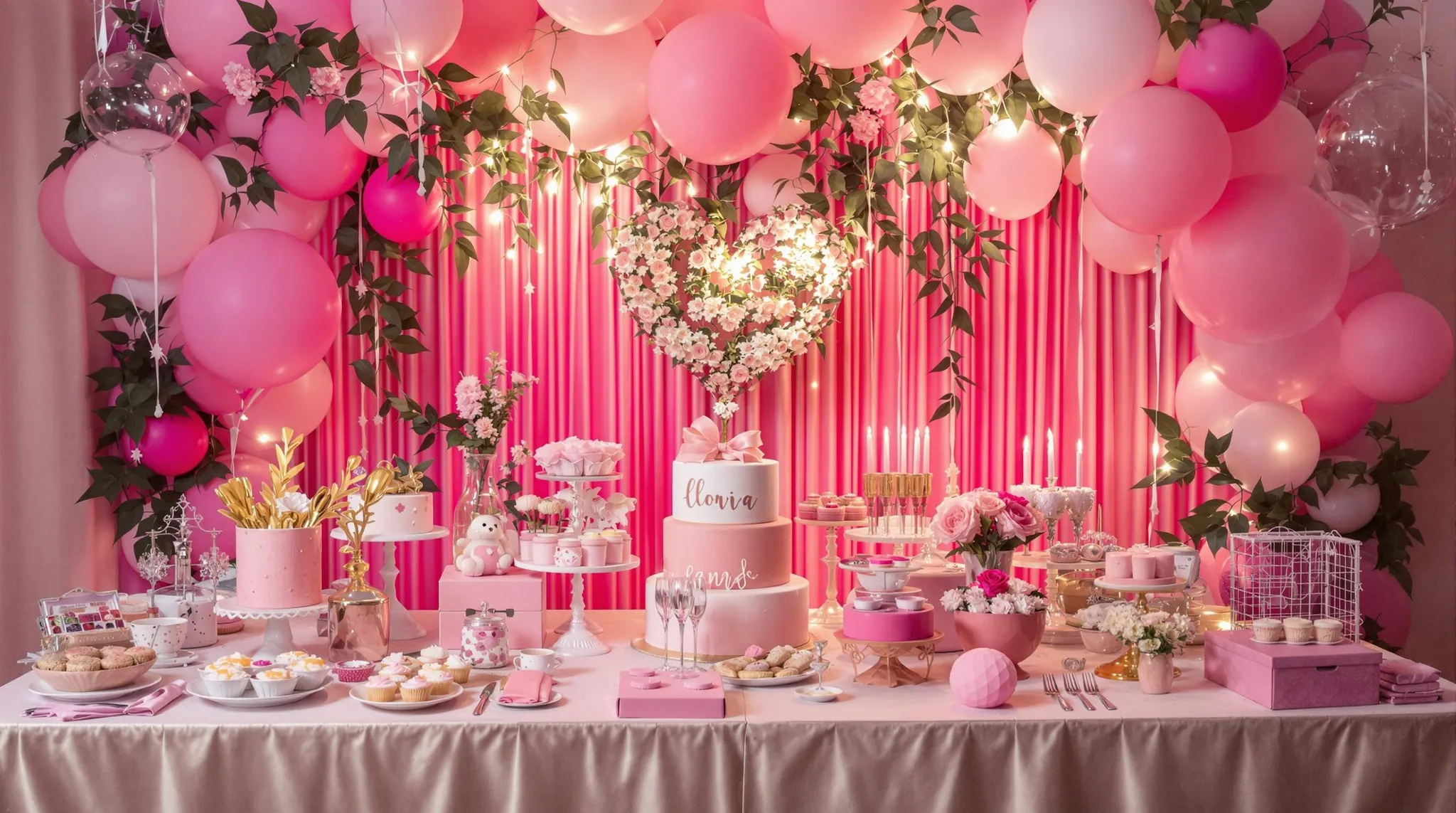
Color Theme Party Ideas: The Ultimate Guide for 2025 Celebrations
Discover fresh and exciting color theme party ideas for 2025! From neon nights to monochromatic magic, learn how to create an unforgettable celebration with our expert tips and trends.
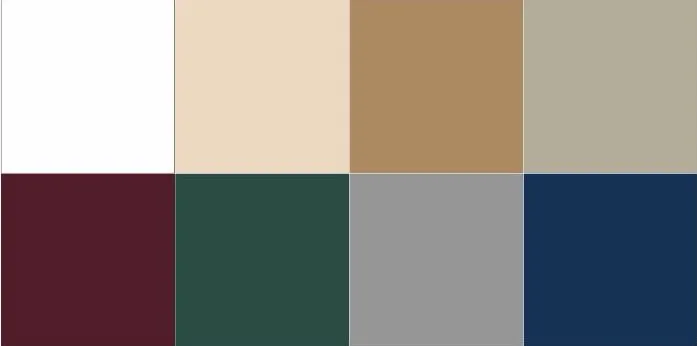
Old Money Style for Men: A Timeless Guide to Refined Elegance
Discover the essential elements of old money style for men. Learn how to build a timeless wardrobe with our comprehensive guide to refined fashion and sophisticated aesthetics.

What Colors Go With Tan: 12 Chic Combinations That Always Work
Discover the best colors to pair with tan for effortlessly sophisticated outfits. From classic neutrals to bold contrasts, these expert-approved combinations will elevate your style instantly.
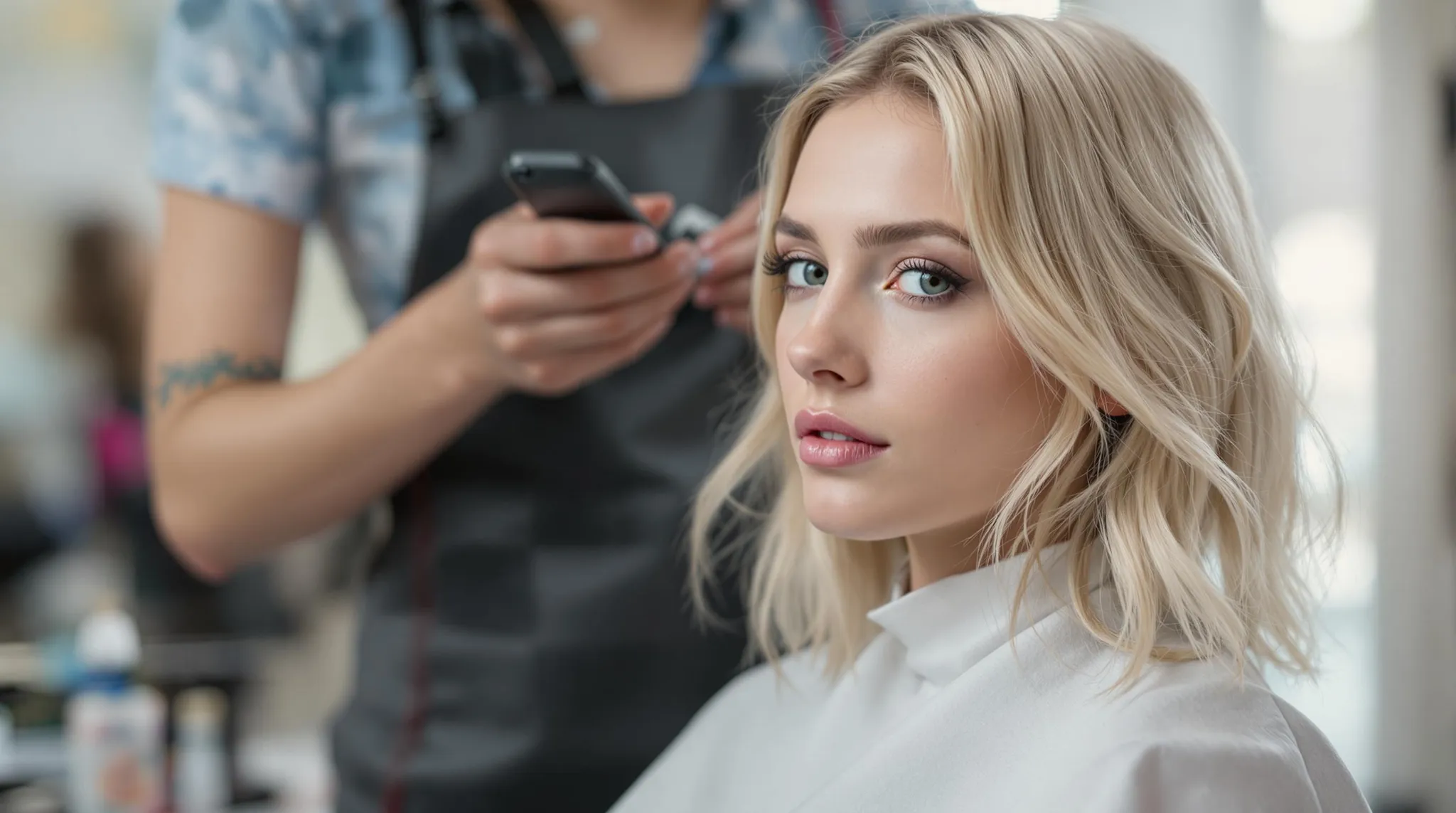
Soft Summer Hair Colors: Your Complete 2025 Guide to Finding Your Perfect Shade
Discover the most flattering soft summer hair colors for 2025. Learn how to choose the right muted, cool-toned shades that complement your natural coloring and enhance your overall appearance.